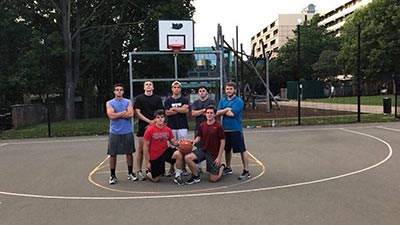Student Reports: Engineering in London, 2017
Twenty-seven classmates traveled “across the pond” to spend five weeks in the beautiful city of London, England, studying thermodynamics and circuits, visiting well-known and historical sites, and making memories to last a lifetime. Here are 10 of those students’ first hand accounts of their amazing adventures abroad.
The Engineering in London 2017 study abroad trip was one that will never be forgotten. This month-long journey proved to be easily one of my greatest college experiences so far. Although this program is obviously centered around learning thermodynamics and circuits, the vast majority of our learning came outside of the classroom. Specifically, the scheduled group field trips provided students with a unique perspective of the city that gave us a level of insight into its incredible history and culture that most travelers never experience. One of my favorite field trips with the group came at the very beginning of the trip on our double-decker bus tour.
Upon arriving in London, it was easy to feel overwhelmed by the rush of the big city. However, this would quickly dissipate as everyone began to introduce themselves and take in the historically rich surroundings on our tour. As the witty tour guide humorously pointed out the notable landmarks and explained their significance, everyone took mental notes of what they would devote their ample free time to exploring over the course of the month. The photos below were taken during the stops on our tour to get some of our first good looks at the city. Passing by the world famous sights of Big Ben, Westminster Abbey, Tower Bridge, London Bridge, St. Paul’s Cathedral, The London Eye, and countless others for the first time often left me speechless. As my Snapchat story rapidly grew in length, my excitement for the upcoming adventures mounted. This tour would ultimately set the tone for the rest of the trip and encourage us all to explore as much of London as possible.
As we figured out how to navigate the city and adapt to the rapid pace, we gained valuable skills and formed lasting friendships that we will carry with us long after we have returned to America. I can not recommend this unparalleled opportunity enough to study engineering in its birthplace and relish in the diverse cultural melting pot that is London.
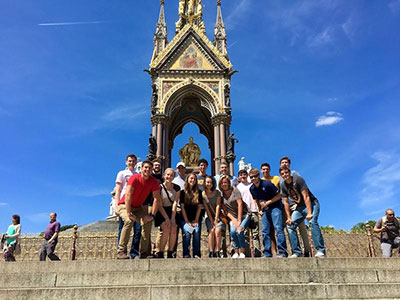
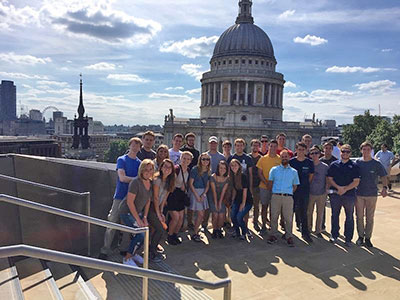
I had an enlightening, rewarding, and above all joyful study abroad experience in London. My fellow engineers and I took coursework that was not only relevant to our respective majors but also relevant to the city we were studying in. Our program included many excursions to places that were relevant to the material we were studying. These excursions included: Bletchley Park, Greenwich, The Royal Institute, The Globe Theatre, The British Science Museum, Kew Steam Museum, and Harry Potter Studios. My favorite excursion is the one I will be blogging about: Greenwich.
Greenwich was a very interesting excursion because there were multiple museums and interesting sights to see. The day started off very uniquely because we took a boat down the River Thames to get to Greenwich, which offered several beautiful sights of London from a unique perspective. Once we arrived at Greenwich, we had a few hours to go through all the area had to offer before meeting at the Royal Observatory to go and see the Prime Meridian. Luckily, Greenwich had plenty to keep us preoccupied. We toured the Cutty Sark, which is a Victorian era British clipper that houses many interesting artifacts that a typical trade ship would have in those days. Much of the original wood on the Cutty Sark is still intact giving the ship a certain historical ambiance that one can sense going through the museum. Also, we toured the National Maritime Museum, which is the largest museum of its kind in the world. Finally, after touring both expansive museums, we ascended the large hill that leads up to the Royal Observatory.
The Royal Observatory provided a cool, educational experience. We learned how the longitude problem was solved by John Harrison. He invented the first accurate clock that could be carried out to sea, and sailors could now tell where they were at sea. The huge discovery also allowed Harrison to designate the Royal Observatory as 0 degrees’ longitude, i.e. the Prime Meridian. We got to see the original clocks that Harrison invented, which was truly exciting.
Overall, the excursions provided a unique opportunity to learn more about the city and the scientific discoveries that have taken place in it. I loved every second of this trip, and my only complaint about is that it did not last another month.
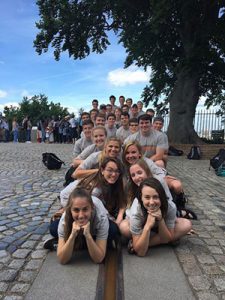
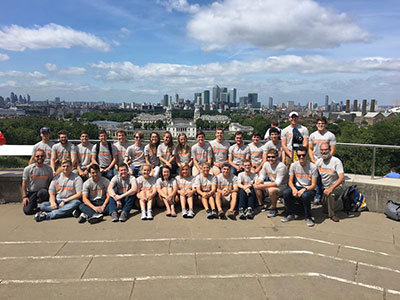
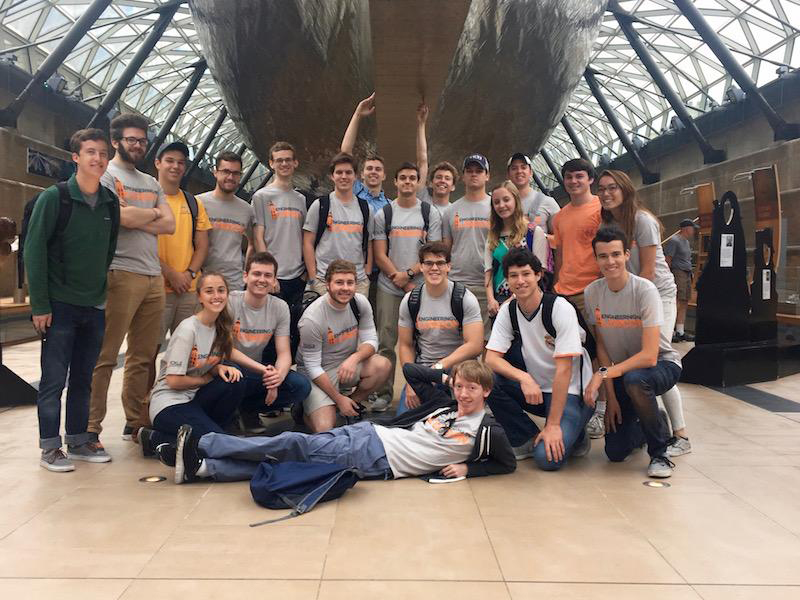
Today we visited the British Science Museum. We were given a list of displays to visit, including a slightly improved version of the first steam engine, which was truly incredible, and Babbage’s Difference Engine Prototype, a piece of equipment so advanced that even those responsible for using it did not understand how it worked.
Another amazing machine on display was the first steam locomotive ever made, and right next to it, George Stephenson’s “Rocket” locomotive, built in 1829. The Rocket locomotive was the fastest locomotive of its time, capable of going 29 miles/hour. It won a competition between locomotives based on pulling a load a given distance as fast as possible. The locomotive completed the competition faster than ever thought possible, and as a result, was nicknamed “The Rocket”.
There were many other revolutionary machines on display at the museum, including the There were many other revolutionary machines on display at the museum, including the first self-lubricating engine, an early lighthouse electricity generator, and even Babbage’s Analytical Engine, the device that inspired computer programming. This experience is just one of many that exemplifies the deeper understanding and greater range of knowledge a student receives when studying abroad. The opportunity to see real-world examples of machines that operate using theory learned in class is a great way to strengthen our understanding of the concepts we cover in the Thermodynamics and Circuits classes.
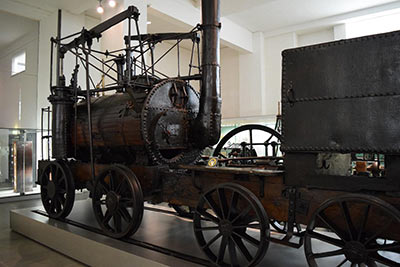
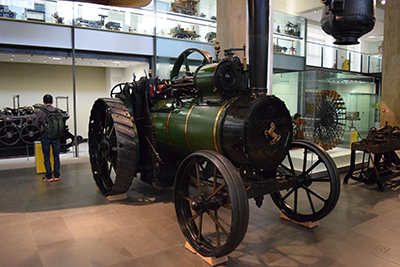
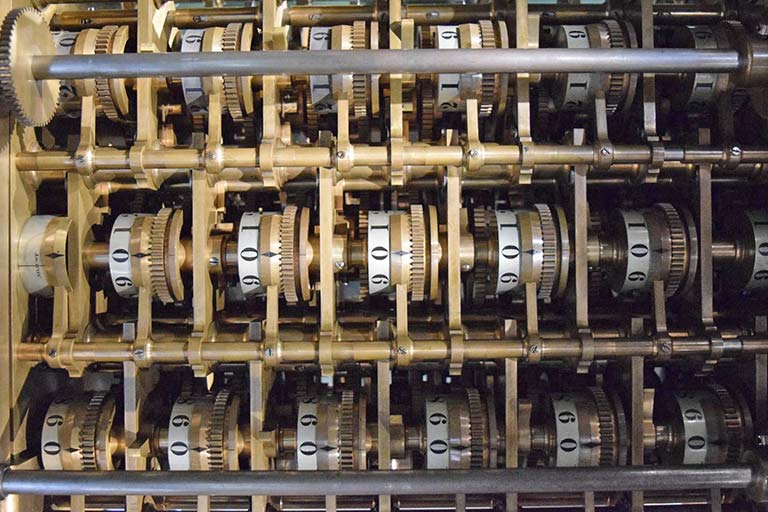
Studying abroad provides an amazing opportunity for students to learn and grow both in and out of the classroom while exploring a new corner of the word we live in. Engineering in London is no exception; in fact, with this program even more opportunities for intellectual expansion await because you get to learn about thermodynamics and circuits in the heart of England right where the fields of study originated. Some of my favorite things I got to do while abroad were the group excursions we went on. For one of these, we got to visit to the Royal Institute (RI), which is the oldest private research institute in the world.
The building itself was beautiful, but what was inside was even more awe inspiring. They had several exhibits displaying the many scientific breakthroughs that took place there. Michael Faraday, easily one of the most influential scientists in history, did most of his work in the basement of the Royal Institute, making groundbreaking discoveries in the fields of chemistry, electricity, and magnetism. The laboratory where Faraday carried out his research is still preserved at RI, and we were able to see it exactly as is looked when he worked there. Not far from it was another, much more modern lab where two engineers were working on a research project right before our very eyes. It was incredible to see the history and future of science side by side.
After spending a while looking at all the exhibits, we left to have a nice dinner and then met back up for what was, in my opinion, the coolest part of this excursion. We got the opportunity to attend a lecture in the very place where Faraday began his Christmas Lectures in 1825. The lecturers spoke about ethics in artificial intelligence, and to say that it was fascinating would be an understatement. Afterwards, we were allowed to stay for a while and converse with one of the lectures about his research and the future of artificial intelligence. I always love meeting and learning from professional engineers that work in the field. This was just the icing on top of wonderful visit to the Royal Institute.
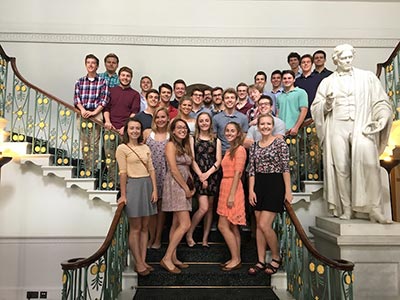
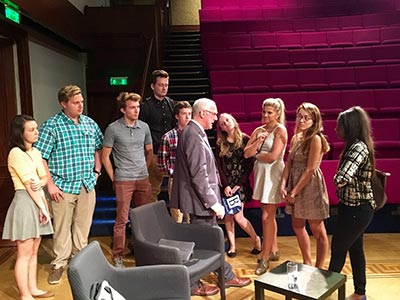
One of the most interesting side trips I went on during the Engineering in London program was when a group of us went to Westminster Abbey for a service. We were able to briefly tour the abbey before the service started, which took us by the tombs of several important scientists, including Joule and Newton, who we had discussed both in the classes we took in London and in previous ones. It was odd to see the tombs and accompanying statues of such prominent figures, but also served as a reminder that these were real people who made the discoveries we so often use.
Westminster Abbey was also intriguing from an engineering standpoint because of the building itself. The Abbey is tall and impressive from the outside, but from the inside you truly get stunned by its size and complexity. The service provided a lot of time to gaze around the main part of the Abbey in wonder and it was still not enough. After I got over the initial awe, I was able to admire the feat of engineering and architecture that the Abbey was. A building like that built in the present day would be impressive, but one completed hundreds of years ago without modern construction equipment and techniques and computers is stunning because of what they had to work with. It gave me a better appreciation for what humans can accomplish and how far engineering has come.
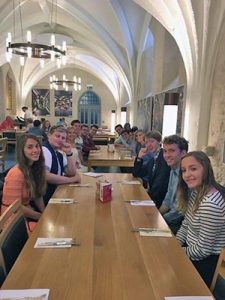
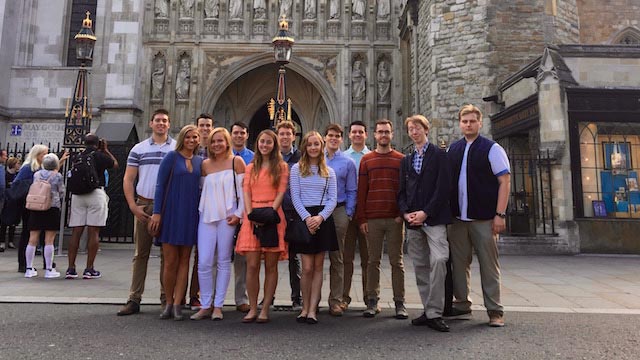
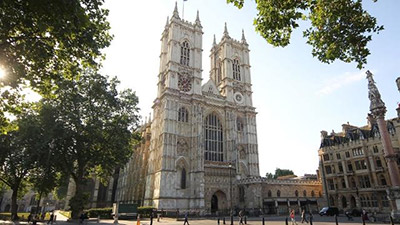
London has a rich history of innovation, and as an engineer it is a wonderland of first inventions that are ready to be marveled at. During the Engineering in London program we got the opportunity to visit the Museum of Water and Steam at Kew Bridge. Water is a part of our everyday lives that we typically take for granted, the complexities of how water gets to our homes is a mystery we do not usually pursue, but has a long history. The Museum of Water and Steam started as an old water pumping station on the river Thames and helped provide water to the people of London since 1838, today the site is used to preserve some of the oldest working Steam engines in existence.
While at The Museum of Water and Steam we were given the opportunity to see several Steam engines operated. The Steam engines ranged from the size of car, to the size of a large room. The significance of these engines is that they are run as they would have been back when they were developed in the early to mid 1800’s. The operators of the engines have to be trained carefully, and once trained are some of the few in the world who have the knowledge to correctly run the machines that spurred the Industrial Revolution in England.
The Steam engines we saw appeared very complex, even with the knowledge of the science going on behind them. The entire process being mechanical made their processes very visual, which is not something that is common today with electronic machines. The mechanical process made the engines a perfect specimen of study for our thermodynamics class. Studying a process in lab is something that could be done anywhere in the world, but the opportunity to learn a process in lab and then go and touch some of the first engines to every operate under it and see them working and producing energy as they would have in the early 1800’s was so enriching.
The contribution of the Steam engine changed the way the world was looked at, a horse was no longer the only things that could do useful work for humans, now water could be used to produce useful work. The work could be used to pump water, and to operate machinery. These machines were the product of the most forward thing of the day, and the process spurred the study of thermodynamics and is the corner stone of mechanical engineering practices.
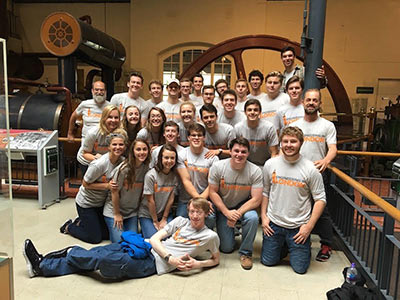
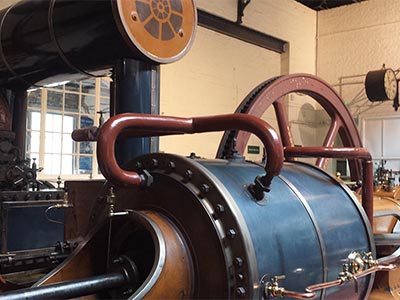
One of the included excursions during our trip was going to see a theater performance at the Globe Theater. The Globe is relatively new, at least the one currently standing: it was built in 1997 while the original Globe for Shakespeare was built around the 1600s. While this performance did not so much fit into our curriculum, it was nice to do something as a group that did not need to be educational but rather entertaining.
The performance was phenomenal with a great cast and hilarious scenes. The outfits of the cast added greatly to the experience. Our tickets were for the standing pit section which is the area that surrounds the stage. The cast would sometimes bring the audience into the performance, and a few of our group got roped into the act. Sadly, no pictures could be taken during the play, but I did manage to take some before of the inside of the theater. They show the outside, inside, and where our group stood during the performance.
The classes we took were not hard enough to deter us from going out into London and exploring, but they also weren’t so easy that we never had to study. Our group worked together during study sessions for the Thermodynamics quizzes, and we made sure we had all the equations we needed on our sheet for each quiz. I found Circuits to be relatively easier than Thermodynamics, but I have also taken some circuits beforehand. Overall, the classes were great and they added to the experience in London rather than subtracting from it. I would definitely recommend this Engineering in London program to any engineering major!
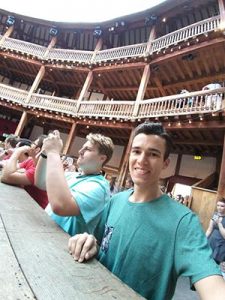
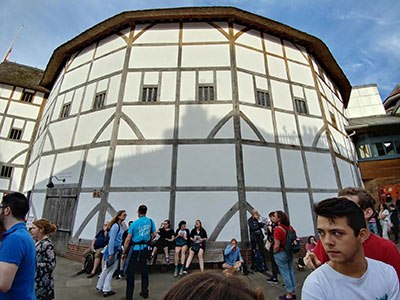
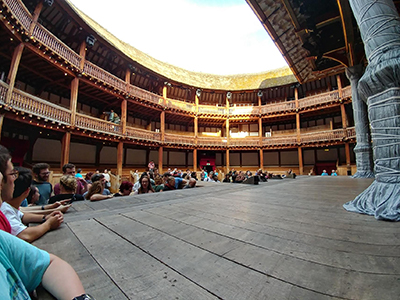
Living in London for five weeks was a truly unique experience that helped me to not only gain a better understanding of British culture but supplemented my classwork as well. We learned about the origins of steam engines in class, and then the next day were taken to see live demonstrations of steam engines in their original birthplace. We were always surrounded by museums where we could find machines and original prototypes of the engines we were learning about. This kind of immersion is an advantage that we could not have experienced at UT, and it increased my understanding of what I was learning.
Another great benefit to living in London was our central location in England. The London Underground made travel within the city a breeze, and I made many spontaneous trips to museums and parks throughout my stay. With trains constantly running in and out of the city I was able to go anywhere I wanted to, and took trips with friends to Edinburgh, Dover, and Brighton on the weekends. The fantastic public transport in London freed me to explore and helped me experience the incredible culture of England in many different places.
My favorite activity we did as a group had to be Bletchley Park, the location of much of the code-breaking in World War II. When we arrived we got to tour around and see where new code-breakers would have been introduced into the park. Soon, we were taken to see a demonstration of an authentic enigma machine and learn how it worked. Our circuits class that we were all taking has a huge connection with Bletchley Park, the enigma machine, and of course the Bombe, the next machine we got to see in action. The Bombe, a massive machine that could emulate 36 enigmas at a time, is an absolute masterpiece of circuitry and engineering. However, the most impressive part of Bletchley Park was the Colossus, the first true digital computer, built to break the German Lorenz encryptions. Standing in front of the Colossus you can feel the heat of the circuits as the machine churns away, working at an incredible rate for the first machine of its kind. Behind all of the magic in these machines were the principles we were learning in our classes, and we all had fun reading the diagrams of the machine they had posted now that we had the ability to understand them.
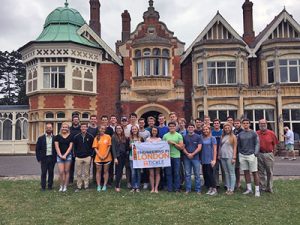
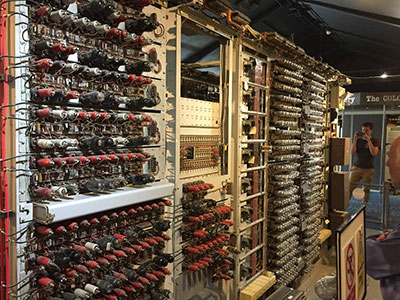
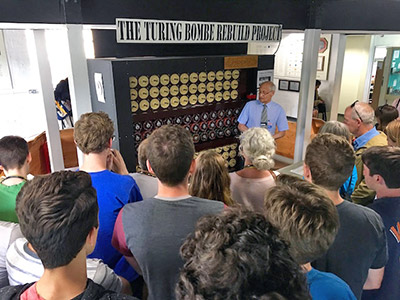
There were a lot of really exciting and insightful experiences from my study abroad trip to London. My peers have written about the Steam Museum, the Science Museum, Bletchley Park, and more. At the end of our time here in London, we were able to visit Harry Potter Studios as a part of our program. This may not seem related to engineering at first glance, but we were able to see how the magic of Harry Potter was engineered behind the scenes and produced on camera. The studios are located in Leavesden just north of London. This is where all eight of the movies were filmed.
For huge Harry Potter fans, like many of us on the trip, this was a truly unique and eye opening experience. We may not always think about the engineering and countless hours that go into amazing productions that we watch everyday. For instance, we were able to explore set and costume design and learn about the processes and material as used to create Dumbledore’s Office or the Forbidden Forest (just to name a couple). Throughout the semester, we learned about steam engines and their relationship with thermodynamics. At Harry Potter Studios, we were able to see a real life steam engine, the Hogwarts Express. We learned that every shot or Hogwarts castle in the movie is actually a shot of the scale model below filmed to look like a full sized castle.
This experience was fun as well as educational. I was thankful for the opportunity to spend time with my classmates at the end of our time here. The studios were a truly magical experience.
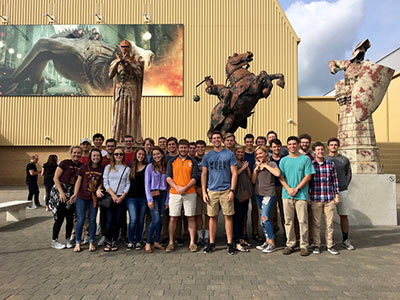
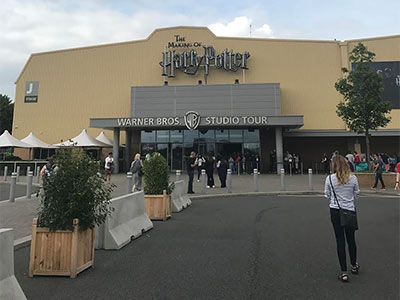
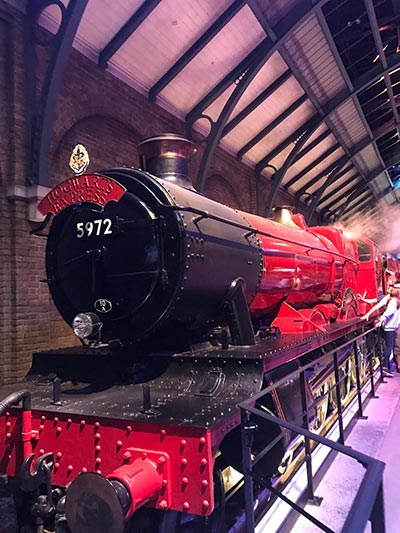
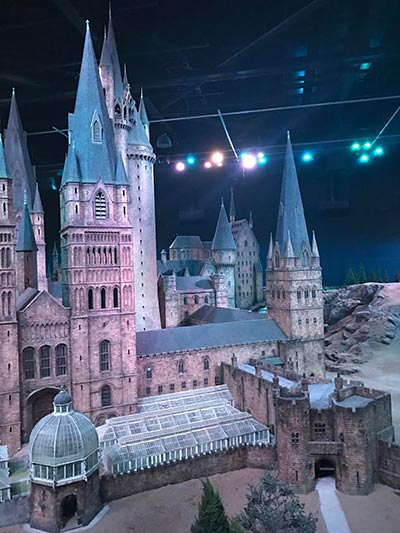
I can honestly say that the Engineering in London 2017 trip was one of the best experiences of my life. Thanks in large part to Dr. Berry, Dr. Parsons, and the entire IES staff, the trip was exceptionally planned out and optimal for getting as much out of the experience as possible while still being taught two fairly complicated subjects in Thermodynamics and Circuits. The professors did their best to keep the course work within the scheduled class time in order to give us as much freedom as possible to explore the city of London and the entire United Kingdom as a whole. I could talk for hours about the material that we learned in what is known as the “Birthplace of Engineering,” but I really want to focus on the once-in-a-lifetime opportunities that we were able to share daily.
While some of the best moments of the trip came in the classroom and on the scheduled field trips, one of my favorite parts about London came after class when we would be walking out of the building and someone would ask “so what do you all want to do today?” There was never a shortage of replies to this question and sometimes even a little mild disagreement would ensue, but at the end of the day we all know there was never a wrong answer to this question. From riding the London Eye to channeling our inner Beatles on Abbey Road, dull moments were hard to come by on this trip.
It would take quite a while to list everything we did in our time in London, but I would definitely like to share a few of my personal favorites to give some perspective on the number of options we had at our disposal. We started the trip off strong by hitting the major sights we were familiar with over the course of the first few days. We visited places such as Big Ben, Westminster Abbey, Buckingham Palace, and the most popular paid tourist attraction in the United Kingdom, the Ferris wheel known as the London Eye. After we hit the postcard sights, we focused on some of the lesser known gems of the city. We made it to Abbey Road, where the Beatles coined the phrase “always cross.” Baker Street was another popular location, home to the legendary detective Sherlock Holmes. We were able to see the play “Wicked” at the West End theatre, known as the Broadway of London. We made it to the Tower of London, a historical castle on the bank of the River Thames, which is now home to the Crown Jewels among many other historical artifacts. One of my personal favorites of the trip was playing some combination of basketball, soccer, football, or even baseball in the many beautiful parks throughout the city.
While the city of London itself never ran out of things to do, it is only right to share some of the places we were exposed to thanks to the opportunity this trip provided. A list of the countries visited by students on our trip while abroad included Ireland, Scotland, France, Switzerland, Germany, and more! Personally, I went with a large group to Paris, France on the three-day weekend gifted to us and it was spectacular! We experienced the Eiffel Tower, Louvre, Arch de Triomphe, and the Catacombes all in a two-day span. Once back in London, we were also able to take a train to the Cliffs of Dover on the southern coast of the United Kingdom. We hiked past caves, castles, lighthouses, and ports all with the coast of France in sight!
As you can see, this trip is so much more than sitting in a classroom for a couple weeks in a different setting. You are actually exposed to a different culture and afforded so many opportunities that would be much more difficult to experience without studying abroad. Life-changing is an understatement and I will forever be grateful those that made it happen.
